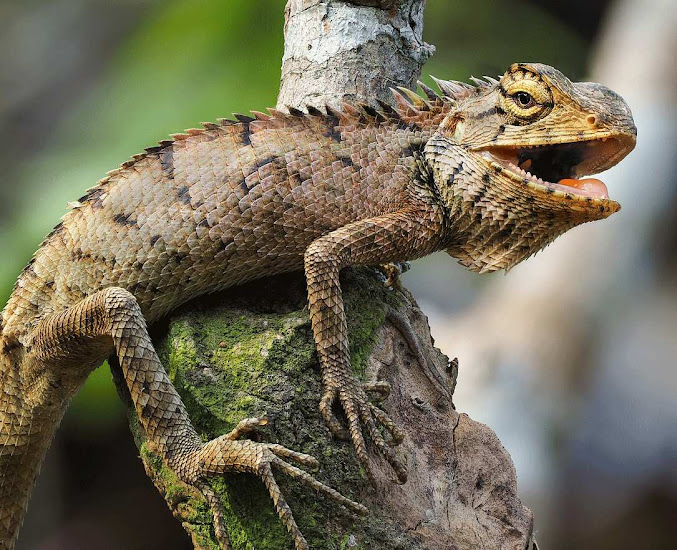Adaptations of a Cheetah
Adaptations of a Cheetah-Variations of Cheetahs
The cheetah is an entrancing creature that has had the option to adjust to its current circumstance to make due. The cheetah is the quickest land creature and can arrive at velocities of up to 70 miles each hour. The cheetah has long legs and a thin body which assists it with running rapidly. The cheetah likewise has sharp paws which assist it with grasping the ground while running. These variations of cheetah have assisted it with getting by in the wild for a long time. Notwithstanding, as people have begun to infringe on their territory, the quantity of wild cheetahs has declined strongly. To guarantee that this eminent creature doesn't become terminated, we should cooperate to safeguard their living space and give them the assets they need to flourish.
Conduct Transformations of a Cheetah- Behavioral Adaptations
The cheetah is a momentous creature that has adjusted to life in the wild in various ways. One of the most remarkable variations is its way of behaving. Cheetahs are known for their speed, however, they are likewise extremely secretive and sly hunters.
While the following prey, cheetahs will frequently hold low to the ground and move gradually until they are sufficiently close to make an unexpected scramble for their objective. This procedure permits them to draw near to the point of guaranteeing an effective kill while staying undetected by their prey until it is past the point of no return.
Cheetahs additionally have a fantastic feeling of hearing and vision, which assists them with finding possible prey from significant stretches away. Whenever they have detected a creature, they will utilize their speed and dexterity to pursue it down before making the kill with a light meal to the neck or throat region.
Actual Variations of a Cheetah
A cheetah's body is long with long legs and a little head with round ears set high on its head. Its jacket is tan with dark spots all around its body besides on its paunch, which is white. Dark streaks run from the edges of its eyes down the sides of its nose to assist with keeping daylight out of its eyes while hunting during sunlight hours.
The actual transformations that permit a cheetah to be a particularly viable hunter are various and different.
Right off the bat, they are worked for speed; their long bodies and strong rear legs mean they can speed up rapidly up to maximum velocities - quicker than some other land creatures.
Also, their paws are semi-retractable which gives them additional grasp while running at high rates - assisting them with making sharp turns without losing energy or balance.
Finally, their spotted coats give cover while the following prey in tall grasses; when they draw sufficiently near, their casualties as a rule don't see them coming until it's past the point of no return!
skeleton Adaptations of a Cheetah
The cheetah's unimaginable speed is made conceivable by various underlying transformations, including a lightweight skeleton, long legs, and a huge heart.
The cheetah's skeleton is around 30% lighter than that of other tantamount cats. This permits the feline to speed up more rapidly and keep up with its high velocity over longer distances.
The cheetah's legs are additionally generally longer than those of different felines, further upgrading its step length and running proficiency.
At last, the cheetah has an expanded heart that siphons blood all the more productively to its muscles during exhausting activity.
These transformations join to make the cheetah perhaps nature's most noteworthy competitor. By understanding how this astounding creature worked for speed, we can acquire experiences in ways we could work on our athletic execution.
Physiological variations of cheetahs
Cheetahs are not simply quick; they are additionally deft and coordinated, ready to take unexpected turns and leaps effortlessly. These abilities to astonish are the aftereffect of a few physiological transformations that permit cheetahs to run so quickly and effectively.
In the first place, cheetahs have long legs compared with their body size which assists them with making more progress with each step.
Second, their paws are semi-retractable and extremely sharp which gives them fantastic footing while running at high rates.
Third, they have a novel cardiovascular framework that permits them to take in a lot of oxygen rapidly while running; this is expected to a limited extent to their enormous lungs and heart as well as unique veins that assist with coursing oxygen all the more proficiently all through their bodies.
At last, cheetahs have incredibly strong rear legs that drive them forward with extraordinary power; this is supported by an adaptable spine that considers a more noteworthy scope of movement while running.
These physiological variations cooperate to permit cheetahs to arrive at unbelievable paces and perform astounding accomplishments while hunting prey on the African fields
5 Quick Facts
About Cheetahs
Albeit presently found in Africa, the cheetah is accepted to have begun in the Americas. The thin huge feline began its relocation into Asia around quite a while back through the Beringian land span. The felines then moved toward the south into Africa.
The cheetah is the world's quickest land creature. They can run as quickly as a vehicle on the highway — up to 70 mph. Also, they can arrive at that speed in only 3 seconds!
Those dark tear lines on one or the other side of a cheetah's nose capability like a football player's dark face paint, keeping the sun out of the enormous feline's eyes while they chase.
A cheetah's paws don't withdraw when they run. All things considered, they carry on like spikes to assist the cheetah with arriving at its maximum velocities.
While running, cheetahs utilize their tail to guide, similar to a rudder for a boat.








